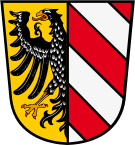Categories Online-Shop Germany German States until 1871 Nuremberg
Nuremberg

Nuremberg is first documented in 1050. Henry III - Roman-German king and emperor - grants the city the market, customs and coinage law. The favorable location on the roads for long-distance trade, which connect North and South, East and West, led to a rapid rise. Above all, the distribution of goods from Italy proved highly lucrative. In 1219 the city was raised to the Free Imperial City. Shortly thereafter, a city council emerged, which also put the city government. Nuremberg was a frequent host of the Reichstag, of which the one of 1355/56 is the most famous. On this the Golden Bull was issued, the constitution of the empire. In 1427 the city acquired the imperial forests and the castle of Nuremberg from the Hohenzollern, the direct neighbors. For that reason, until the end of the empire, conflicts arose between the city and the noble family. In Renaissance and Baroque times Nuremberg was one of the richest and most important cities of the empire. It lost its status as a free city in 1806, when the empire was dissolved and the city passed to Bavaria.
Nuremberg is documented as an imperial mint since the second half of the 12th century. The Nuremberg penny dominated the economy of the region from the middle of the 13th century. In 1422, King Sigismund granted the city great coin privilege and a year later the first shillings were struck. Only a little later, the first gold gulden were issued. With the accession to the Monetary Convention of Augsburg from 1559, the Reichsguldiner became the leading coin of the Nuremberg economy for the next two centuries. The mint in Nuremberg was one of the most active in the entire empire and also influenced foreign coin authorities who did not want or could not afford their own mint.


